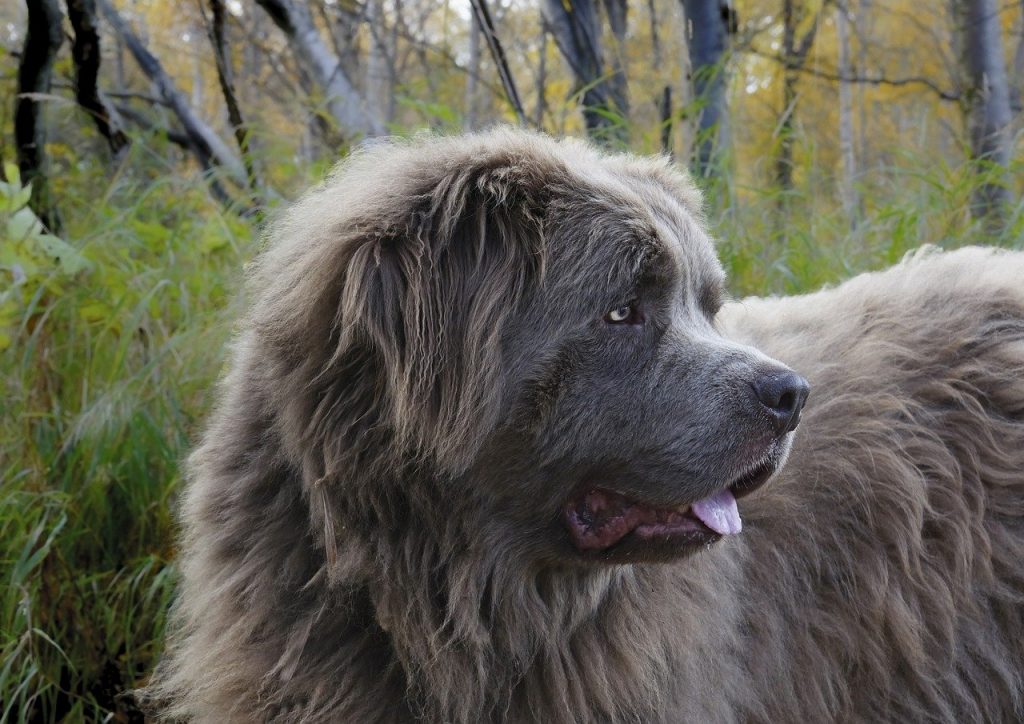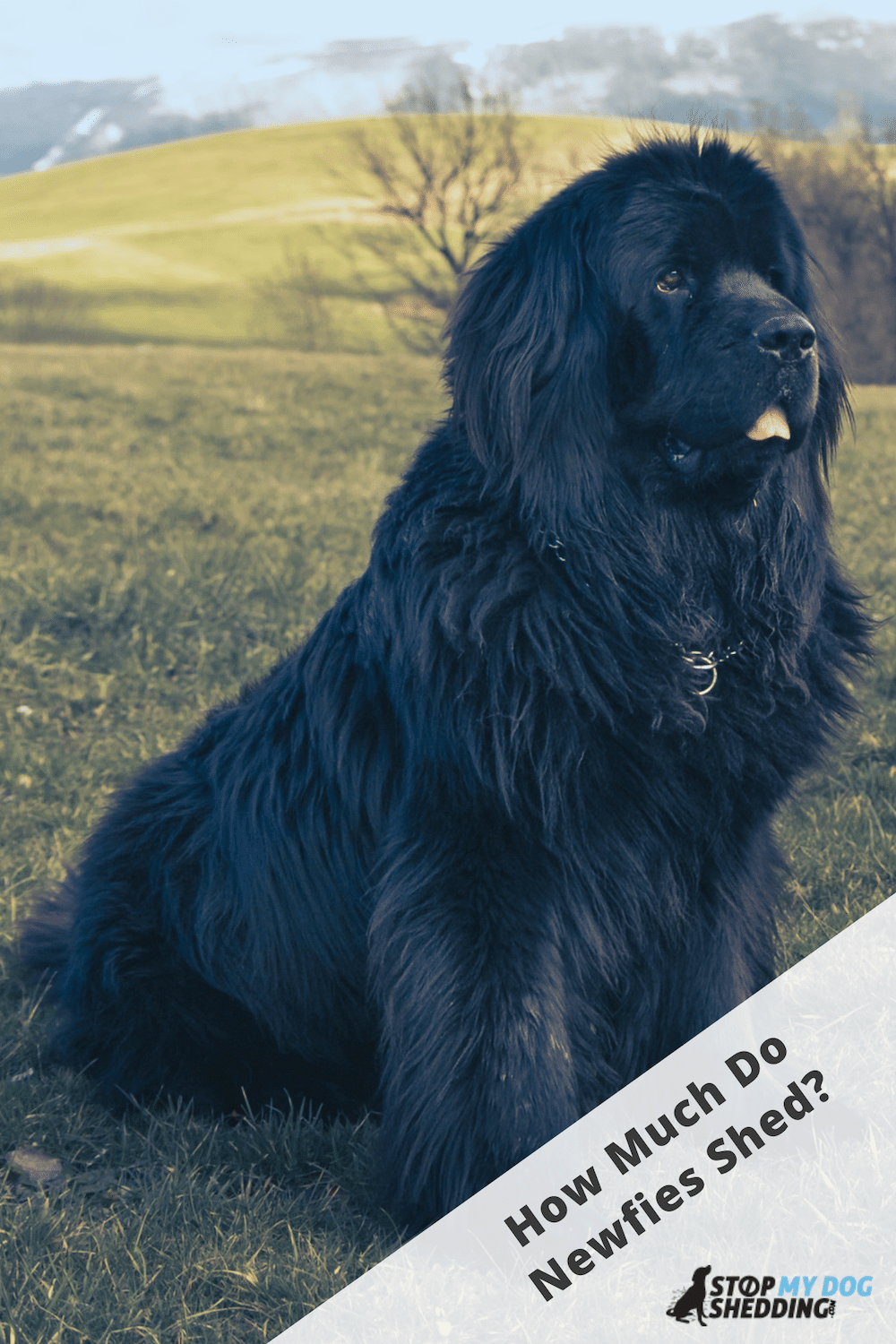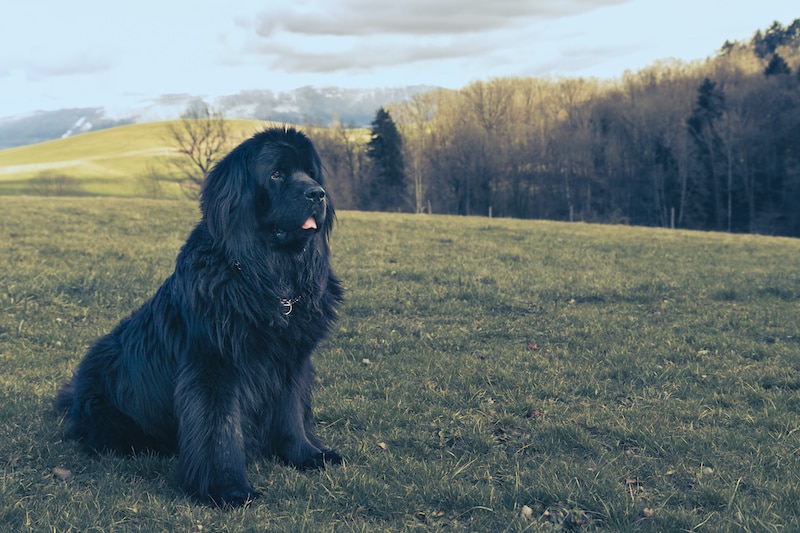Newfoundlands are large working dogs that originate from the Canadian province of Newfoundland. They are often referred to as a “gentle giant” given their size and calm temperament and are known for being courageous water rescue dogs as well as loyal companions.
Do they shed much? Newfoundlands (Newfies) are a fairly high shedding breed with thick undercoats, which means you will notice a higher amount of shedding during spring and fall as they “blow coat.” In order to keep your home as hair free as possible and maintain their coat, regular brushing with a slicker brush and comb is essential.
Let’s discuss in more detail how much hair you should expect to see around the home, as well as what Newfs are like to groom and what makes them so special.
Recommended: Go here to see our top-rated dog hair blow dryers
Newfoundlands Shedding
Newfoundlands are a fairly high shedding breed. To give you an idea of just how much, they’re up there with heavy shedding breeds like the Bernese Mountain Dog and Great Pyrenees for example. Which are some of the heaviest shedders you’ll come across.
The shedding isn’t terribly bad most of the time throughout the year though, it’s more like moderate. However, because they have a thick undercoat, which keeps them warm in winter and cooler in summer, they do blow coat seasonally.
Which means they will shed (a lot) more profusely in the lead up to these seasonal changes. Specifically, during spring and autumn.
This seasonal shedding doesn’t really begin until after they’re about 3 years old though. Their adult coat doesn’t properly develop until this point, so you have a few years of bliss before you’re hit with a never ending barrage of fur (lol).
Aside from just the coat itself, the sheer size of Newfies means they have more hair to lose than a smaller dog. So even a moderate rate of shedding can result in more fur to clean up.
This is a similar to story to other large breeds like the Great Dane for example. However, the difference between a breed like the Great Dane and Newfoundland, is that Newfoundlands have much thicker, longer coats. So not only is it more noticeable when the hair does fall out, but they require more effort to groom.
How Hard Are They to Groom?
Newfies have a long, coarse top coat with a thick, soft undercoat. Their coat is also waterproof and helps insulate them in colder weather, which has served them well in the cold climate of Newfoundland, where they’re from.
Unfortunately though, this does mean they require a bit of maintenance. They’re not particularly high maintenance, like a Wheaten Terrier for example, but their coat definitely requires more time and attention than their close relative, the English Mastiff.
This is because the Newfy coat is long, thick and basically acts as a mud magnet. So keeping his coat matt and debris free can be a chore, especially if he spends a lot of time outdoors.
What sort of brush should you use?
There’s no hard and fast rule as to which brush you should use, but a good wire slicker brush is ideal for brushing the outer coat. These do a lot of the initial heavy lifting for you when it comes to de-matting and removing the dead hairs from the outer coat.
And once you’ve brushed him with a slicker, a good quality undercoat rake, comb or deshedding tool are great options to remove the loose fur from the undercoat. This is going to take some time, but you might be surprised at just how much fur you can remove this way, before it ends up on your furniture, clothes and floor. So it’s well worth the effort!
Check out our top rated shedding brushes and buyer’s guide to learn more about which brush is best suited to which type of coat.
In any case, brushing a couple times per week is all that’s required, but if you want to keep the shedding under control, especially during spring and fall, then daily brushing can be very effective.
Other grooming needs involve simple thing like teeth and ear cleaning, nail trimming and bathing once every month or two.
Reducing Newfie Shedding
The best way to reduce the amount of fur your Newfie sheds is to brush properly and regularly. Not only does brushing remove the dead hairs from the source, before they get a chance to fall out in your home, but it’s really good for his coat.
Brushing helps to distribute his coat oils, which can improve the moisture content of his skin, which in turn can help prevent excessive shedding due to dry skin.
It’s important to brush all the way down to the undercoat though, simply brushing the top coat will help to an extent, but removing that loose undercoat fur is far better. Especially when they are blowing coat.

For the undercoat, I personally prefer a shedding tool because these work very well, but a simple long-toothed comb is all you really need.
Aside from regular brushing, there are some other great ways to reduce shedding significantly. Such as ensuring he is enjoying a well balanced diet, and that you are not over bathing him or bathing him with cheap shampoos.
The reason your dog’s diet is so important when it comes to shedding is that it can help reduce shedding from the inside. When you’re dog is consuming the right vitamins, nutrients, and the right amount of healthy fat, their coat will be healthier and less dry.
Some even supplement their food with a small amount of virgin coconut oil to encourage moisture in the skin and hair. In moderation, this is safe and can make a difference, but it’s always best to speak with a veterinarian before making any changes to your dog’s diet.
When it comes to bathing, try to use a good quality dog shampoo that contains as few chemicals as possible, and keep it monthly or bi-monthly to avoid drying out the skin.
Should You Adopt a Newfie?
Newfies are a large breed of working dog. And when I say large, I mean giant! Males can weigh up 150 pounds (68 kg) and stand 28 inches tall (71 centimeters).
They were originally used by fisherman in Newfoundland, a Canadian province, to retrieve fishing nets, wood from nearby forests and generally help out.
It is unclear exactly how the Newfoundland dog came to be, but they are said to be related to other Canadian retrievers like the Labrador and Golden Retriever. And they share similarities to the English Mastiff and St. Bernard.
These days, they are best known for being “gentle giants” that make excellent water dogs given their webbed feet, waterproof coat, strength and ability to swim. This is why they’re often used as water rescue dogs.
Newfies are also known to be very loyal, loving and protective family companions that are great around children and other family pets. Just keep in mind they are very large and heavy, so small children could be unintentionally knocked around.
All in all, if you’re looking for a strong, sweet natured working dog, and you don’t mind the regular brushing, then the Newfoundland will make a great addition to your family.
Related Questions
Are Newfoundlands Hypoallergenic?
No, Newfoundlands are not hypoallergenic. Given the amount of hair they shed year round, they are definitely not the best choice for allergy sufferers.
Do Newfoundlands Smell?
Newfies can smell if you don’t groom them properly and regularly enough, especially around the ears and tail area. Bathing once per month or every other month, along with weekly brushing, should be enough to keep this under control though.
Alternative Breeds That Shed Less Fur?
A Newfypoo (part Poodle and part Newfoundland) is a good breed to consider if you’re wanting a low shedding alternative. Other large, low shedding, breeds include the Irish Water Spaniel, Goldendoodle, Saluki, Airedale.













Please note: By submitting a comment using the above comment form, you confirm that you agree with the storage and handling of your data by this site as detailed in our Privacy Policy.